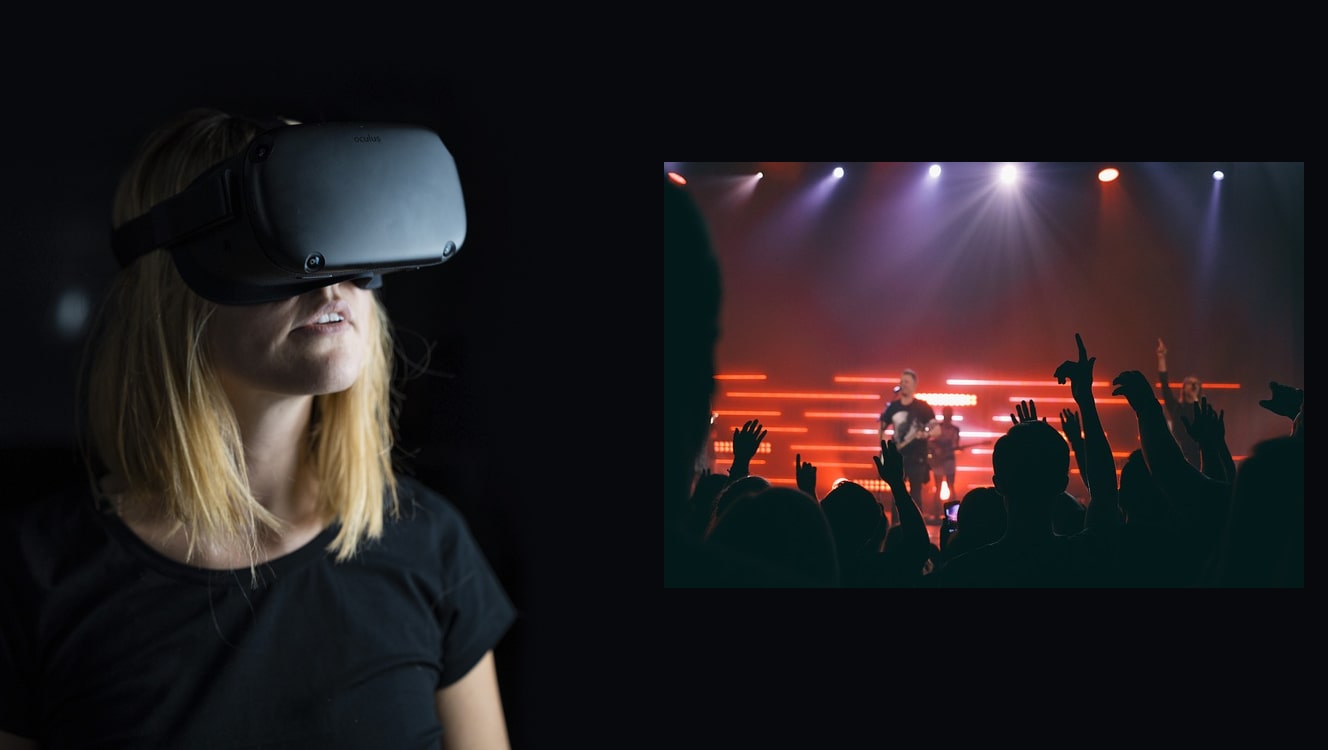
Virtual reality or VR is often called “immersive technology,” and rightly so. While augmented reality (AR) simply adds to one’s perception of the real world, VR replaces it completely. It allows you to feel as if you have been teleported to a different place or a different world altogether.
Because of the pandemic, live events have been put on pause. And some companies have been trying to use VR to deliver entertainment content to viewers. However, before this new mode of event participation is accepted by the masses, there are some obstacles that need to be overcome.
Obstacle 1 – Not everyone has a VR headset
VR headsets are mostly owned – and used – by the gaming community. In that sense, they are a niche product and not as ubiquitous as smartphones, for example. This is eloquently illustrated in the VR device shipments report by Statista, where Sony’s PlayStation VR leads the chart with nearly 40% of market share.
In recent times, however, we’ve seen a number of products developed primarily for Oculus Rift and Oculus Quest, another brand of VR headset, that are not gaming-related. As other types of VR products become more widespread, VR headsets may start being used by a more diverse audience.
Obstacle 2 – Recording VR content is a challenge
Organizing a VR broadcast is both a technical and an organizational challenge. You need special cameras, microphones, and stitching software to do that. When it comes to VR cameras, they fall into two types: 360-degree and 3D cameras. Then there are also 3D-inside-360 professional cams that are quite expensive and intended for broadcasting companies. The difference is that a 360-degree camera will capture panoramic footage, but that footage will be flat (2D), while a 3D camera has so-called “depth of field,” resulting in the kind of spherical effect you get at 3D movie theaters.
A few years ago, one of the top professional VR cameras to watch was Nokia’s OZO VR camera, which resembled a fly’s complex eye. It was a 3D-inside-360 type of cam. Unfortunately, the product was terminated after two years of R&D due to “slower-than-expected development of the VR market.”
Just around the time Nokia shut down OZO VR, Samsung unveiled its 360 Round professional VR camera. It has seventeen lenses and can stream live 3D video in 4K with minimum latency. The cam records spatial audio, as well, which is an important ingredient in creating a believable VR experience. This means that if you hear a sound coming from your left, you should be able to turn your head and see the source of that sound there.
Obstacle 3 – Broadcasts should adapt to VR
VR broadcasts are still something new and unfamiliar to most people. The same seems to be true of broadcasters. With a traditional broadcast of, say, a sports game, the broadcaster knows they have to switch cameras every now and then to show the game from various angles. But in a VR world, the viewer can turn their head or choose to go to a different viewpoint on their own. In the VR world, the viewer is in control.
Sometimes, the broadcaster’s decision to switch cameras at will irritates the viewer. Here is a comment on Oculus Venues, Facebook’s hub for VR events:
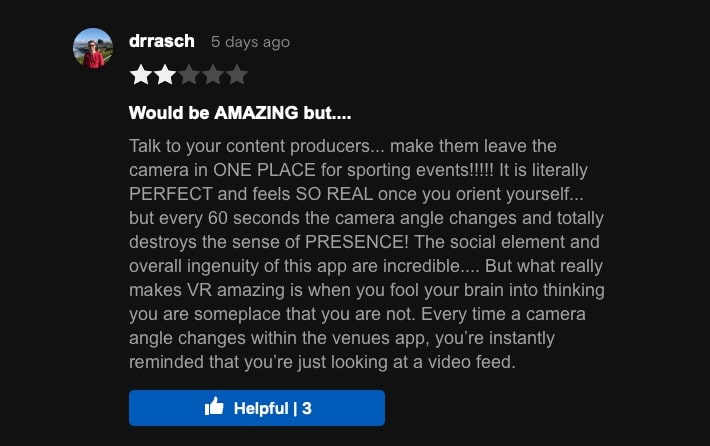
Another difference some reviewers noticed is that the video is not as crisp as it normally is on high-resolution monitors.
Example 1 – VR for performing arts
Tempest
Once the lockdown began, theaters shut their doors and many actors got laid off. But when one door closes, another one opens. Tender Claws, an award-winning indie games maker, came up with the idea of selling tickets to VR performances, enacted by real actors.
In July, Tender Claws unveiled Tempest, a VR show based on Shakespeare’s play by the same name. It’s an interactive theater experience where viewers are also active participants of the story, albeit in VR. The actor who plays Prospero is the only one who can talk. Audience members are Prospero’s spirits, who appear as masked figures. Masks can move around, tilt their head, snap their fingers, and take off their masks.
The feedback for the game has been overwhelmingly positive. Many who “went to see” Tempest testified that it felt like an authentic experience. Norman Chan, a reviewer on Adam Savage’s Tested YouTube channel, says:
While the live performer adds so much, because it is live and there is this tension of the live event happening… you are not just a passive participant. You have this opportunity to wander… you are encouraged to wander these environments that you are whisked off to. And also form these unspoken – because you are not using your voice – unspoken bonds with the other attendees. Where at the end of the experience, after 45 minutes when I left, it really felt like a unique social gathering that I want to go back to… It really felt like going to a play.
While a handful of people experienced technical glitches, the show has been rather popular since the launch in July. Tempest will run through September 2020, with tickets available for Oculus Quest and Oculus Rift holders.
Example 2 – VR for sports broadcasts
NBA VR broadcasts
When it comes to cutting-edge tech like AR or VR, the National Basketball League seems to keep its finger on the pulse. The NBA recently announced that it has partnered with Verizon Media to deliver VR content to Oculus Venues – Facebook’s portal for various VR events, some of them interactive. Previously, NBA VR broadcasts used to be done in partnership with NextVR, but NextVR was recently acquired by Apple, who is believed to be working on its own VR gear.
According to some people who already had a chance to watch an NBA game on Oculus Venues, it’s quite an unusual experience: the app really puts the virtual version of you in the stands and you can see other people’s heads “floating” in different parts of the stadium. There is also an option to turn on your mic and talk to a person seated next to you – I think that’s pretty cool, but don’t know if anyone is doing it.
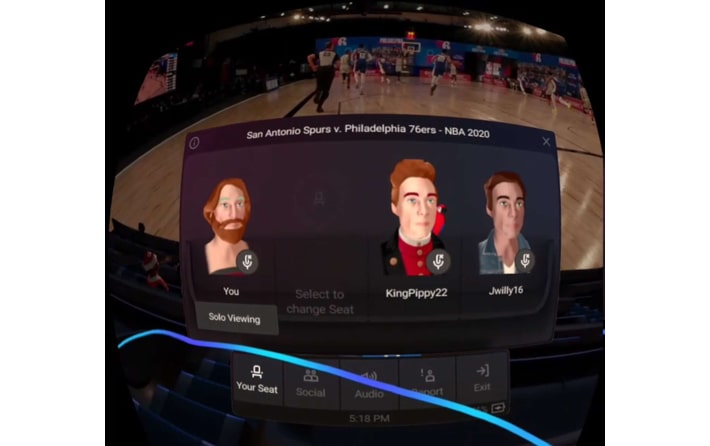
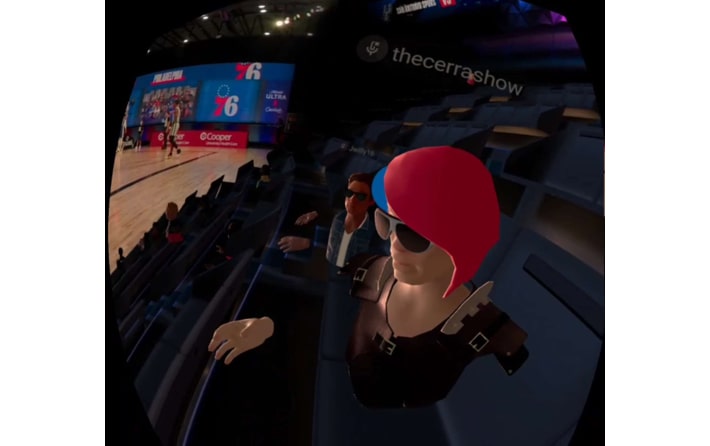
WEAVR Esports broadcasts
WEAVR is a U.K. government-backed eSports innovation project. Started in January 2019, it is meant to “answer the Government’s call to develop the next generation of immersive experiences,” per their website. WEAVR is actually a consortium of seven organizations, including some VR tech firms like Future Visual and REWIND, big data companies like Cybula, and VR recording equipment providers like Focal Point VR, among others.
The WEAVR app is currently used mostly for broadcasting Esports like ESLOne games. Developers say a more mature version is expected to come out in mid-August 2020.
Example 3 – VR for other types of get-togethers
As I browsed Oculus Venues for different events, I stumbled across these interested options (apart from events like VR movies or Space X launches):
Saturday Synth Fever with Synth Riders
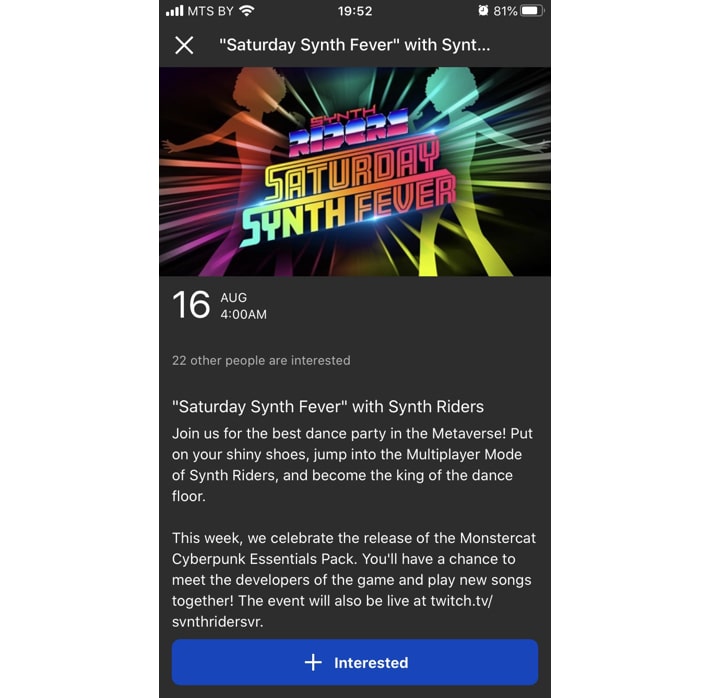
It is a VR dance party. Synth Riders is a dance-action rhythm game. Now every Saturday, they invite you to join in the multi-player mode, dance along, and listen to some good music.
Open Mic Night
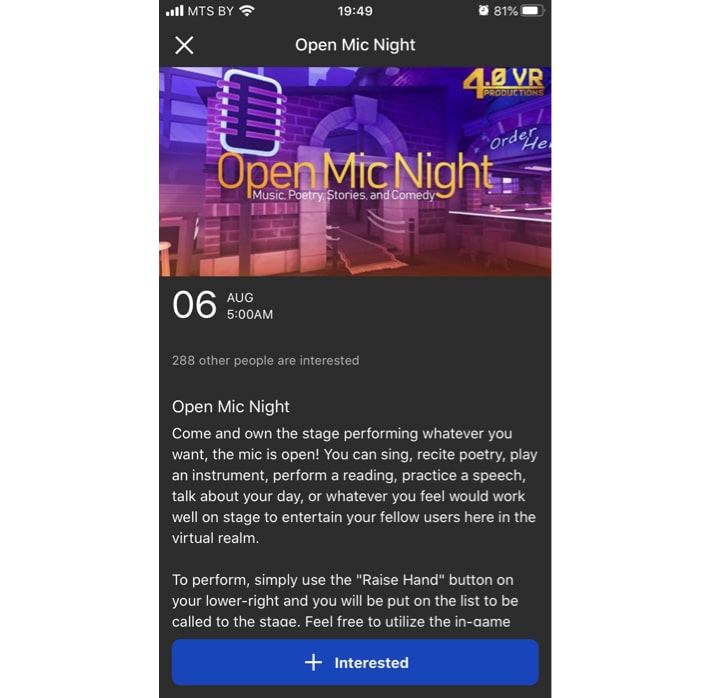
At this event, you are invited to join others in singing, reciting poems, playing guitar, piano, or whatever it is you want to play, practicing your TED talk, and whatnot. To be called on the stage, you have to hit the Raise Hand button and wait for your turn to be called to the stage.
Not sure I’m ready to go on stage yet, but it would be definitely interesting to see what others do there.
TL; DR
When the pandemic began, many in-venue activities moved online: face-to-face meetings turned into Zoom calls, eating out gave way to contactless delivery, etc. Following the analogy, in-venue entertainment could have moved to VR, but the technology is not there yet. While some companies acted fast and quickly cooked up VR offerings for those missing live entertainment (like the NBA and Tender Claws), producing and marketing VR content remains a challenge.
Further VR adoption could be spurred by the pandemic, but it’s unclear whether broadcasters and production companies are willing to invest in a technology that is risky and lacks maturity. Perhaps when the tech is ripe enough and the main issues have been sorted out, then it will gain wider adoption.
Related Blogs
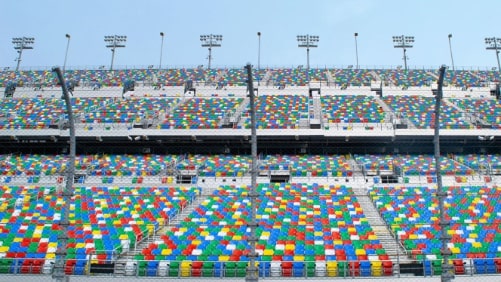
Can AR energize sports games played without fans?
LEARN MORE